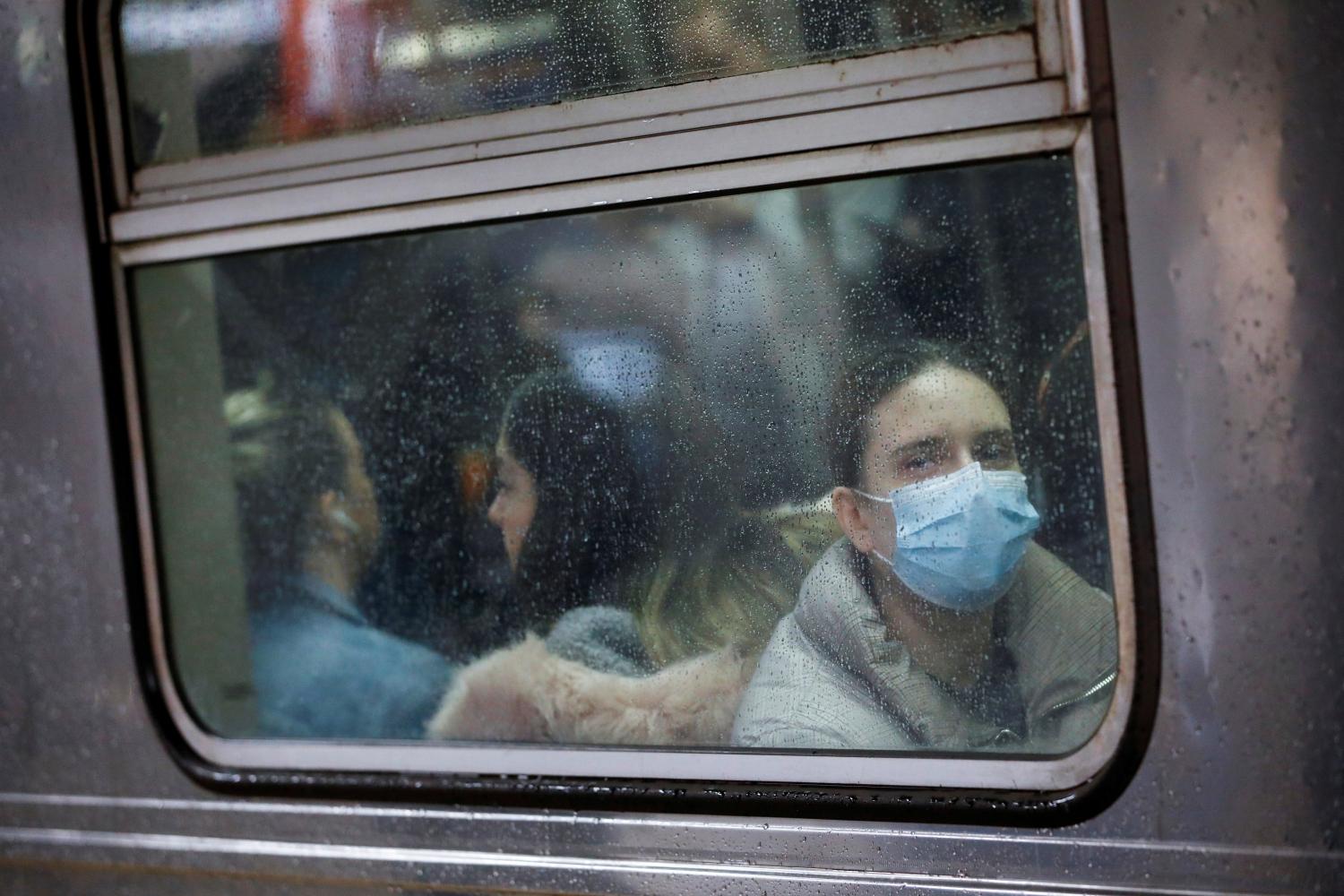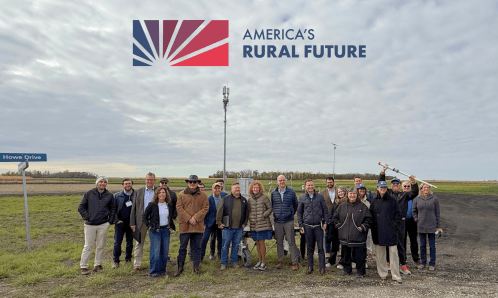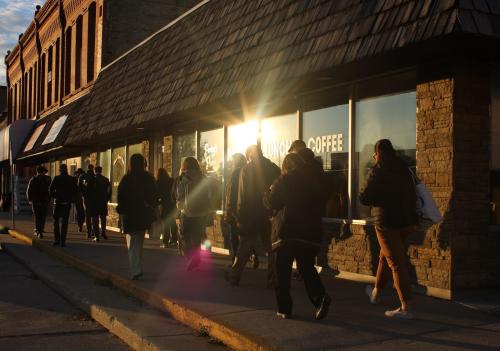This page has been updated with analysis of data as of May 17. Further below is an update from last week, pertaining to data as of May 10.
As more parts of America proclaim themselves open for business, COVID-19 continues to expand into new counties and states in many areas with demographic and political orientations favorable to President Donald Trump. This is especially noteworthy given that the president has pushed for an even faster reopening of the U.S. economy.
Now, for four weeks running, counties newly designated with a high prevalence of COVID-19 cases were more likely to have voted for Trump than for Hillary Clinton in the 2016 presidential election, according to our analyses. In the latest week of this monitor, such counties favored Trump by a 12% margin in 2016, and, as in recent weeks, they are also much less urban and less racially diverse than places where the coronavirus was most prevalent in March and early April.
This tracking represents our seventh week of monitoring counties that newly qualify as reaching high COVID-19 prevalence (at least 100 cases per 100,000 population based on case data reported by The New York Times and 2019 population data reported by the U.S. Census Bureau). In the most recent week, May 11 to May 17, 176 new counties identified as high-prevalence counties. In the seven weeks between March 29 and May 17, the share of the U.S. population residing in such counties rose from 8% to 79%.

County map
Map 1 makes plain that COVID-19’s spread is continuing southward and westward from its northeastern concentration at the end of March. Counties identified in the most recent week are heavily located in the South (80 counties) and Midwest (68). There is also a high representation in smaller areas, as 159 of the 176 newly identified high-prevalence counties lie in outer suburbs, small metropolitan areas, or outside of metropolitan areas. (Notable exceptions are Florida’s Hillsborough and Pinellas counties, part of the greater Tampa metro area; Wake County, N.C., in the Raleigh metro area; and the Texas counties of Bexar and Collin, part of the San Antonio and Dallas metro areas, respectively.)
Especially noteworthy are the political aspects of this expansion. Among new high-prevalence counties from the week of May 11 to May 17, Trump won 151 of them in the 2016 election. Clinton was the victor in just 25. While it is true that many of the Clinton counties had larger populations than the mostly rural and small metropolitan Trump counties, voters residing in these counties, combined, favored Trump by a margin of 53 to 41.

County map 2
Over the four-week period between April 20 and May 17, 697 new high COVID-19 prevalence counties voted for Trump, compared with just 127 that voted for Clinton. This ratio of over 5-to-1 is larger than the 2-to-1 ratio in the prior three weeks (March 30 to April 19). Moreover, in each of the past four weeks, voters of newly designated high COVID-19 prevalence counties, combined, showed more votes for Trump than for Clinton (See Figure 1 below).
A breakdown of these 697 Trump counties, again, shows high prevalence in the South and Midwest. The largest numbers of southern high-prevalence counties are in Texas (52 counties), Georgia (45), and Virginia (36). In the Midwest, high-prevalence counties are in Indiana (40) and Iowa (37). Also noteworthy are the 101 high-prevalence Trump counties located in the swing states of Pennsylvania, Michigan, Wisconsin, North Carolina, and Florida. Overall, including earlier weeks (as Map 2 depicts), 1,163 high COVID-19 prevalence counties voted for Trump in 2016, compared to 375 that voted for Clinton.
In past four weeks, the number of states where at least 40% of residents lived in high COVID-19 prevalence counties increased from 23 to 46. Eighteen of the 23 new states voted for Trump in 2016—most recently, Arkansas, Kansas, and Wisconsin. Thus, as of May 17, 26 of these 46 states are “red” states, compared to 20 “blue” states.


The overall demographics of persons residing in newly designated high COVID-19 prevalence counties continues to transition away from earlier urbanized, racially diverse, and high-inequality counties. Among those living in counties newly designated from May 11 to May 17, only 15% reside in highly dense urban cores, while over half live in the outer suburbs, small metro areas, and nonmetropolitan areas. These county populations are 65% white—a larger percentage than the nation as a whole (60%) and far greater than the white population share living in such counties on March 29 (48%). Similarly, new high-prevalence counties are home to a lower share of foreign-born residents and high-income households than was the case for new counties in earlier weeks.
There is a clear trend in the works among counties now experiencing a high COVID-19 prevalence for the first time. Compared to the counties where the pandemic first hit, these they look much more like the rest of America, and in particular, reflect the kinds of areas that carried President Trump to victory in 2016. This suggests that rhetoric from some of the president’s supporters against maintaining public health measures may become more muted, as the nation continues to grapple with the many unknowns about COVID-19’s continued spread.
May 14, 2020
For the third straight week, new COVID-19 cases spread to Trump counties
As governors, mayors, and other local officials debate the merits of President Donald Trump’s stance that the nation’s economy should reopen as quickly as possible, COVID-19 cases continue to expand outward, and increasingly to areas that voted for the president. This is confirmed in the latest installment of our regular coronavirus tracking, which shows that—for the third straight week—counties newly designated with a high COVID-19 prevalence were home to more Trump voters than Clinton voters during the 2016 election. The newly designated counties are concentrated in smaller and nonmetropolitan areas in the South and Midwest, and contained a larger share of white residents than in any previous week. In addition, there was a continued spread toward and within less urban states that voted for Trump in 2016.
These results extend our earlier analyses, which have tracked the expansion of high COVID-19 prevalence counties since the end of March, with emphasis on their demographic attributes and political leanings. The results reported here include county data for the sixth week of tracking (May 4 through May 10), with 203 counties newly qualifying for high-prevalence status (at least 100 cases per 100,000 population, based on case data reported by The New York Times and 2019 population data from the U.S. Census Bureau).
As shown in Table 1, the percentage of the U.S. population residing in high-prevalence counties increased to 72%, up from just 8% on March 29. About a quarter of the nation’s population joined these ranks in the past three weeks.

County map
The spread of these counties, depicted in Map 1, shows a westward expansion from the initial Northeast clustering at the end of March. In subsequent weeks, high COVID-19 prevalence counties spread into the Midwest and South, with a broad expansion in the latter region. That began in Louisiana, Georgia, and Mississippi, but eventually spread over most of the South. Aside from a few hotspots such as greater Seattle, the spread to the West was more sporadic and headlined by gains in several populous California counties at the end of April and early May, including San Francisco, Los Angeles, Riverside, and San Diego.
The most notable trend was COVID-19’s expansion out of dense urban core areas to the outer suburbs, smaller metropolitan areas, and small counties that lie outside metropolitan areas. While many large metro areas in all regions registered high COVID-19 prevalence, there was a bigger shift to populations in smaller places and, increasingly, nonmetropolitan counties particularly in the South and Midwest.


The newly designated high-prevalence counties for May 4 to May 10 amplify some of these trends. South and Midwest residents comprise 70% of all residents in new high-prevalence counties, including those living in 142 small and nonmetropolitan counties that are located in those regions. Likewise, the very small share of Northeast residents in newly designated counties are all located in exurbs, small metro areas, and rural areas. About a quarter of residents in new high-prevalence counties reside in the West, again including smaller counties but also populous ones such as Orange County, Calif. and Multnomah Couth, Ore. Overall, the most recent week of newly designated high COVID-19 prevalence counties impacted the outer suburbs, small metro areas, and nonmetropolitan areas, whose residents comprised half of all new counties’ populations.
These newly designated counties are less racially diverse than high-prevalence counties of prior weeks, with 65% of residents identifying as white. Likewise, the share of residents identifying as foreign born (11.2%) is smaller. And continuing the trend of recent weeks, residents of this new tranche of counties are more concentrated in middle-income categories than earlier ones.
The most notable facet of this week’s group of new high-prevalence counties is their political orientation. In the 2016 presidential election, voters of these counties together favored Trump over Hillary Clinton by a margin of 50 to 44. As shown in Figure 1, this makes May 4 to May 10 the third straight week when newly designated high COVID-19 prevalence counties housed voter populations that favored Trump over Clinton—a reversal from weeks prior.

County map 2
This trend is even more pronounced when examining Trump’s voter advantage in the number of counties that have reached high-prevalence status since the end of March. Of the 59 counties classified as high-prevalence on March 29, Clinton was victorious in more than half. But in the weeks between March 30 and April 19, Trump won in over twice as many new high-prevalence counties as Clinton (440 versus 215), with large numbers in the red states of Georgia (63 counties), Louisiana (43), Mississippi (35), and Indiana (31), and more modest gains in the swing states of Pennsylvania, Michigan, and Virginia. Three-quarters of these 2016 Trump counties were located in small or nonmetropolitan areas.
For counties that reached high COVID-19 prevalence in the past three weeks—between April 20 and May 10—Trump won over five times more of them than Clinton (548 versus 102) in the 2016 election. These are spread over broader parts of the South and Midwest, in largely red and purple states. While Georgia gained another 40 high-prevalence counties that Trump carried in 2016, Texas and North Carolina added to their totals with 39 and 26 new counties, respectively, as did Tennessee and Kentucky. Midwestern Trump counties reached high-prevalence in Indiana (34 counties), Iowa (31), and in the blue state of Minnesota (20). Among the tranche of Republican-leaning high COVID-19 prevalence counties added in the most recent week, nearly four-fifths were smaller metropolitan or heavily rural counties.
When looking at the state level, it is clear that high-prevalence counties are increasingly representing populations in red states. Back on April 19, 23 states had at least 40% of their residents living in high-prevalence counties. Since then, 19 new states joined those ranks, including 15 states that voted for Trump—most recently, Missouri and North Dakota. There are now 23 red states in which more than two-fifths of the population resides in high COVID-19 prevalence counties, compared to just 19 blue states that have reached this status.
This analysis makes plain that, over the six-week period since the end of March, there has been a broad dispersion of COVID-19 cases into smaller, less dense areas in all parts of the country, comprising populations from a wide range of demographic categories. It is especially noteworthy that, over the past three weeks, more residents of newly designated high COVID-19 prevalence counties voted for Trump over Clinton in the 2016 presidential election. This suggests that, despite recent protests and polling, debates over reopening the economy could turn out to be far more nuanced than a simple red America versus blue America disagreement.
The Brookings Institution is committed to quality, independence, and impact.
We are supported by a diverse array of funders. In line with our values and policies, each Brookings publication represents the sole views of its author(s).





Commentary
COVID-19 continues spreading into counties with strong Trump support
May 20, 2020